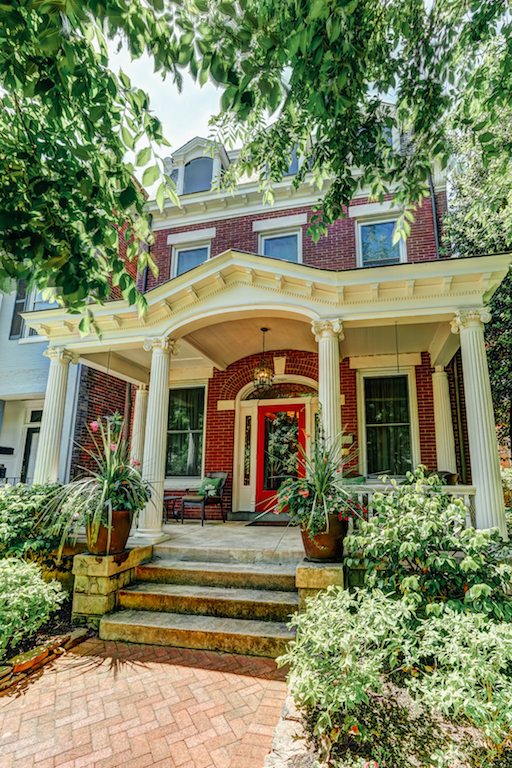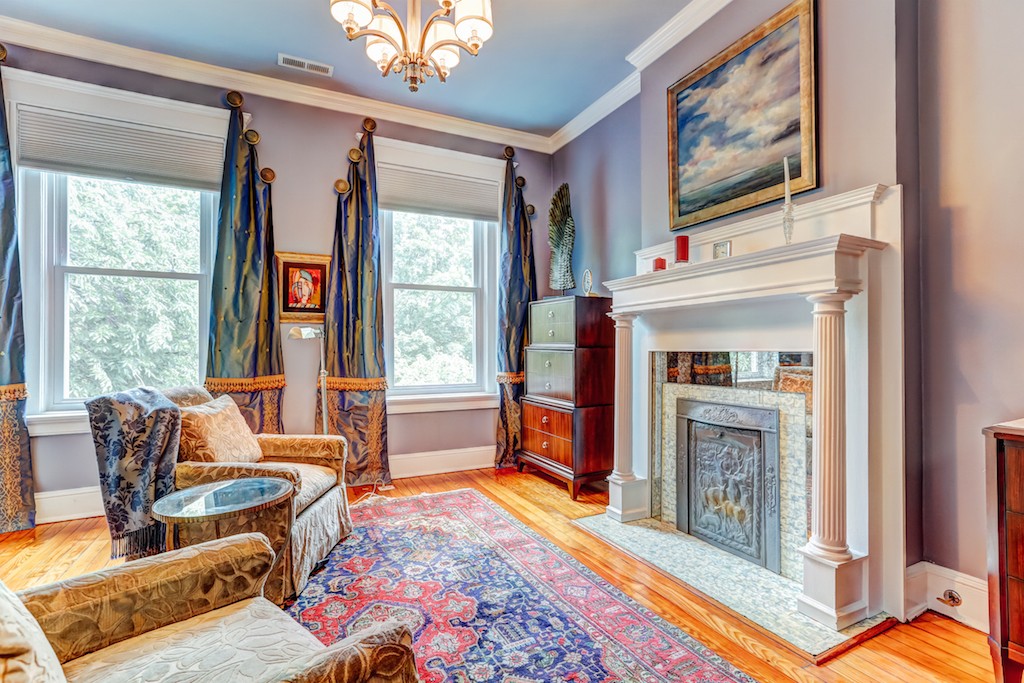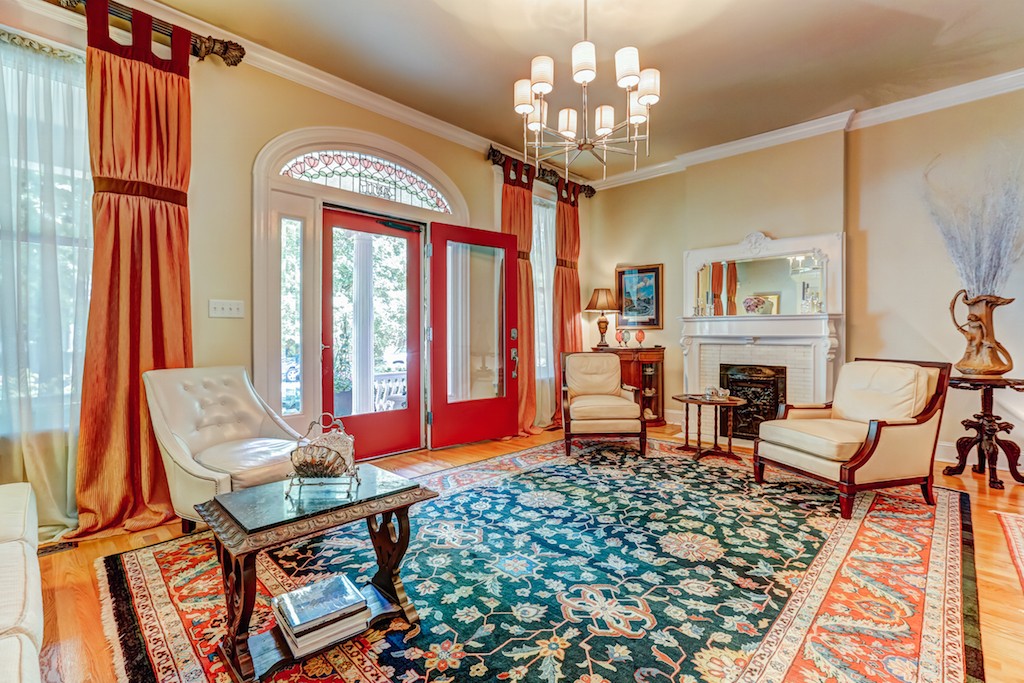
A historic Virginia home located at 2511 Hanover Avenue in Richmond. (All photos courtesy of Wanda Fears, Long and Foster Real Estate)
Eyeing the area on a map between U.S. Route 1 and the Boulevard in Richmond, Va., a distinct pattern emerges. City blocks multiply as roadways fan westward in the aptly-named Historic Fan District, home to residences built in the 19th and early 20th centuries. Scanning over the East End of the city, more historic neighborhoods materialize, including Church Hill, site of the church where Patrick Henry famously declared, “Give me liberty, or give me death!”
These enclaves are hot spots for homebuyers interested in historic properties, says Richmond, Va. REALTOR® Wanda Fears, Long and Foster Real Estate. In step with their inherent longevity, homes in these districts were relatively unscathed when housing plummeted, weathering the crash far better than other markets.
“If you go back to ‘07 or ‘08, those areas had somewhat of a downturn, but nowhere near what the newer homes were having,” says Fears. In Richmond’s current market, “you can get a really nice historic home between $500,000 to $700,000. And they can go all the way up to a million on Monument [Avenue].”
Though that general price range exists, historic house hunters should avoid placing offers based on comparable data. Historic homes in Church Hill and the Fan are too singular, too unique to rightfully compare.
“You can’t just do a radius search and price a home,” explains Fears. “It’s block to block. What has happened on that block? Who has renovated? Are apartments mixed in? Is it a wider street? A skinnier street? Does it have a bike trail? Is there a stop sign on the corner? Does it have off-street parking? All of these can be positives and negatives, and they are very much a part of what we need to look at when pricing.”
Historic properties or districts can be listed with the National Register of Historic Places or with the State Historic Preservation Officer. The National Register generally assesses properties by examining historical significance, age and authenticity. A property may be a contender for the National Register if it is 50 years of age or older, contains features in line with its original construction, or tells a story worth preserving, such as playing host to a landmark event or housing a notable occupant in the past.
Historic homes protected at the state or local level may be subject to guidelines prohibiting certain renovations. In Richmond, limitations typically apply to the façade of homes: “You do have to  jump through hoops to change the exterior,” Fears says. The federal government does not enforce any restrictions unless federal funding is attached to the property.
jump through hoops to change the exterior,” Fears says. The federal government does not enforce any restrictions unless federal funding is attached to the property.
Related: The New Age of Home Character
When searching for a historic property, buyers must bear in mind square footage is at a premium. Expect minimal kitchen and bathroom storage and low ceilings. The inner workings of the structure will likely require updating as well, especially when asbestos or lead is a concern. Asbestos poses the least risk if left undisturbed, but those planning to renovate will be saddled with the additional cost of testing and removal, as fibers may become airborne during a remodel.
Lead, on the other hand, cannot be ignored. Most homes built before 1978 contain lead-based paint, which can be found on doors, windows and walls. By law, the seller of the home must disclose this information, provided it’s to their knowledge. The seller is also required to include a “Lead Warning Statement” in the contract and provide an EPA-approved informational pamphlet and a 10-day inspection window.
In addition, maintenance can be another drawback. DIY-happy buyers must understand the home’s construction and local historic building codes before taking on any project. And because cities tend to spring up around early settlements, historic homeowners regularly settle for on-street parking. In Church Hill and the Fan, a lack of parking can come at a hefty cost.
“Parking is an issue and tends to cause problems with resale,” says Fears. “Those moving in from the suburbs are used to having garages and parking, and not having that can make a $50,000 difference on a house.”
 Those seeking to own and live in historic residential properties may qualify for state tax breaks. (Learn which programs are available in your state here.) They will not be eligible, however, for incentives offered by the federal government, including the 20 percent income credit.
Those seeking to own and live in historic residential properties may qualify for state tax breaks. (Learn which programs are available in your state here.) They will not be eligible, however, for incentives offered by the federal government, including the 20 percent income credit.
But for the more than half of Americans who covet walkability in their communities, these shortcomings are minor trade-offs. Historic homes are often steps away from shopping, restaurants, museums and theaters, Fears says, lending a small town feel to a densely populated metropolis.
“A lot of people like to sit on their front porches, have a cocktail with their neighbors,” says Fears. “It’s the closest thing you can get to living in a city, but with a small town atmosphere.”
 Suzanne De Vita is RISMedia’s Online Associate Editor and social butterfly. When she’s not touring historic homes, she’s telling other people to tour historic homes.
Suzanne De Vita is RISMedia’s Online Associate Editor and social butterfly. When she’s not touring historic homes, she’s telling other people to tour historic homes.







Love this. What a very nice article about historic homes in Richmond, Va. We thank you.
Having lived and worked in that area–moving south to Charlotte just prior to the hurricane damage to Monument Avenue and the Bottom–this is a most interesting read. It should be helpful information to any realtor in any historical location. Charleston certainly comes to mind when I think of Richmond and its beauty.